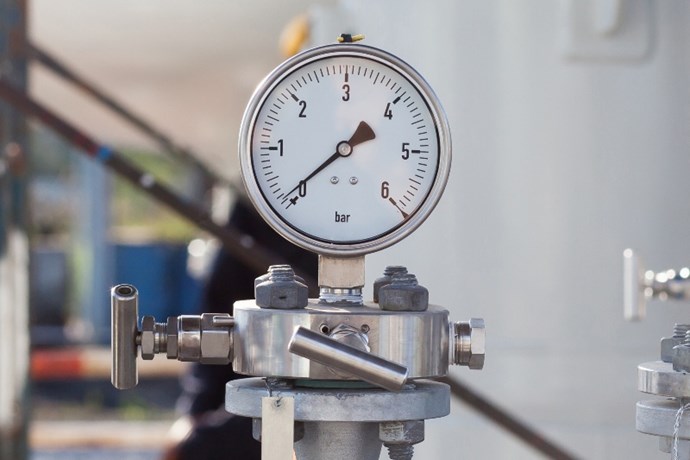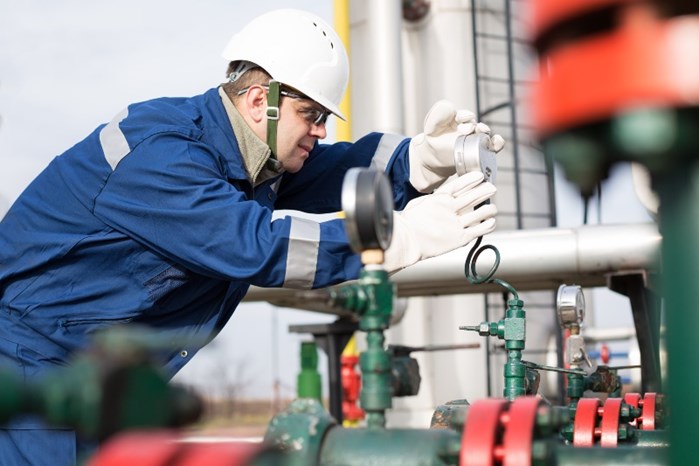Innovation under pressure: 8 key elements in the hydrogen infrastructure
For use in mobile applications such as transportation, hydrogen must be kept compressed under extremely high pressure. Kiwa experts are leading the way in overcoming these challenges, developing solutions, testing designs and materials and preparing certifications. These are the eight key elements in the robust H2 infrastructure of the future.
1. Underground storage
Hydrogen is relatively easy to extract: an electric current in water splits water molecules (H2O) into hydrogen (H2) and oxygen (O2). If that power is generated with sustainable CO2-free energy sources such as wind turbines or solar parks, then an emissions-free energy chain is possible. This requires good, large-scale and, above all, safe storage of the hydrogen gas produced.
“That's why scientists are looking specifically at empty natural gas fields, salt caverns and other stable underground spaces for large-scale storage,” says Sjoerd Delnooz, unit manager at Kiwa Technology, which plays a leading role in researching and testing H2 technology. “Globally, millions of cubic metres of natural gas have been extracted since the start of natural gas extraction. Potentially, many of these empty gas fields can be used for H2 storage. We are investigating how this can be done safely.”
2. Mobile storage tanks
To withstand the extreme forces involved, manufacturers of H2 storage tanks are now almost unanimously using composite. Daan ten Have, energy specialist at Kiwa: “Composite is stronger than steel, is tear-resistant due to its layered structure and weighs less, so more H2 can be stored with the same total system weight. All filling and draining openings must also meet the highest standards, such as the GTR13/R134 requirement for automotive and, for example, EN 12245 and ISO 17339 for mobile storage. Mobile storage systems even have to withstand three times the normal load – up to 2,100 bar.”
3. Transport pipes
Experts expect to be able to make relatively easy use of existing pipeline networks to transport hydrogen. But is that really possible? And what does it take to be able to do that 100% safely and certified? “Kiwa does a lot of research and testing to see which adjustments are needed for this,” says Ten Have. “Fortunately, the pressure during transport does not have to be as high as the 700 bar in mobile systems. Natural gas is pumped at 50 bar. We do H2 tests at 60-70 bar and look at all aspects, all control systems and valves, seals and gaskets – right down to the control units at the end users.”
Special attention is needed for the tubes themselves. “Hydrogen molecules are much smaller than natural gas or carbon dioxide molecules,” explains Delnooz. “In theory, this means that much more H2 gas escapes through the inevitable microscopic holes in the material of the pipes – we call this permeation. Naturally, all elements must undergo thorough preliminary tests and gain specific approval and low-pressure transport certification.”
4. Sealing rubbers, gaskets
Hydrogen is not a very aggressive substance but, as Delnooz explains, “it can attack non-metals and rubbers – for example, in sealing rings. Current legislation and regulations say little about the requirements that apply. That is why we have designed realistic practical tests ourselves – for example, tests in which rubber is exposed to hydrogen gas at high pressure at different temperatures and in which the permeability of the material is tested.” That way, innovation and legislation can go hand in hand.

5. Pressure regulators
One of the most critical components is the pressure regulator. Ten Have: “This is the most sensitive element: a mechanical control system where on one side high-pressure H2 gas goes in, which is 700 bar, and on the other side H2 gas comes out at significantly lower pressure. Such an extreme pressure difference is already very stressful for static materials, and it’s especially so for a control mechanism with moving components, sealing rubbers and a very sensitive pointer needle that must always accurately display the pressure. The active components in particular make it very complex. They often have to be retested and further developed before they are ready for market. Partly because of this, testing and certification processes often take a long time.”
6. Gas mass meters
Kiwa is also investigating whether the current gas mass meters in pressure stations should be replaced. “Not so much because of the materials, because that can be sorted,” says Delnooz. The main focus here is the size of the existing meters. “Because H2 has a three times lower energy density than natural gas, these meters may need to be three times larger,” explains Delnooz. “That sounds simple, but it does not necessarily fit in every meter cupboard or mobile set-up. That is why we are now investigating the potential, accuracy and reliability of various types of ultrasonic meters for H2 measurement.”
7. Burners
To use hydrogen instead of natural gas for combustion in existing installations such as central heating boilers or cooking appliances, different burners are also required. Delnooz: “A natural gas flame burns a few millimetres above the burner; a hydrogen flame directly against the burner mouth. This makes it much hotter. If you use H2 in a natural gas burner, it will overheat and will quickly fail. Specific H2 burners therefore have smaller burner nozzles and are made of more heat-resistant material.” This is one of the relatively easily adapted elements in the chain. “Some types of natural gas boilers are even prepared for this,” says Delnooz. “They have burners that you can replace – plug and play – with hydrogen burners. We also use it in our Hydrogen House.” Time will tell if these domestic hydrogen burners will be used in bulk.

8. H2 nozzle
Undoubtedly, one of the most crucial and demanding elements in the chain is the fuel nozzle with which you, as a consumer, can refuel your hydrogen car. Ten Have: “The lab of Kiwa Alternative Fuels and Pressure Products has several manufacturers in its customer portfolio who have a large share in the filling nozzles market for filling stations. The technology is there and H2 filling stations are already operating at 700 bar. But the market is still very small, as are the numbers, and the costs per item are therefore high. Due to the technically complex design (communication between the car and the fuel column is incorporated, for example), this leads to long certification processes. In addition, the standards are very strict in respect to consumer safety.”



